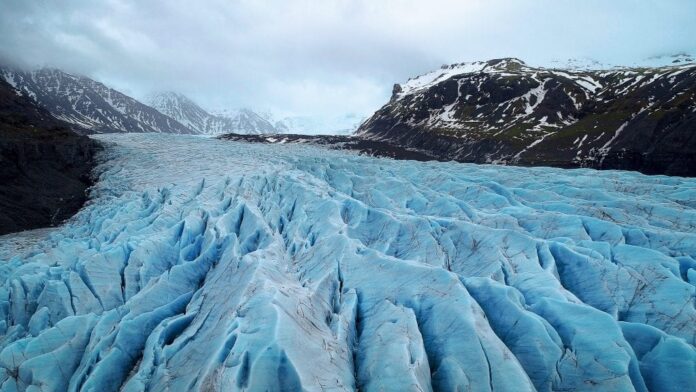Table of Contents
Introduction
Iceland is one of the world’s most stunning and surreal destinations, known for its dramatic landscapes shaped by volcanoes, glaciers, geysers, and waterfalls. It’s a place where you can witness the Northern Lights, soak in natural hot springs, From black sand beaches to ice caves, this guide highlights the best places to visit in Iceland for adventure seekers, nature lovers, and first-time travelers alike.
Visiting Iceland feels like stepping into a dream sculpted by nature’s most powerful forces. Glaciers shimmer beneath the midnight sun, volcanoes sleep under blankets of moss, and steam rises from hidden hot springs in frozen valleys. One moment, you’re standing beneath a roaring waterfall; the next, you’re watching the sky ignite with the Northern Lights. Iceland isn’t just a destination — it’s a place where fire meets ice, silence meets thunder, and every landscape tells a story. Whether you seek wild adventure or quiet awe, Iceland leaves a mark on your soul that lingers long after the journey ends.
Explore Iceland’s Fiery Side (Volcanoes & Geothermal Wonders)
Fagradalsfjall Volcano – Walk on Fresh Lava Fields
Fagradalsfjall, located on the Reykjanes Peninsula, erupted in 2021 (and again in 2022 & 2023), making it one of Iceland’s most active and accessible volcanoes in recent history. It’s only about a 1-hour drive from Reykjavík, and the hiking trails are well-marked and suitable for moderately fit travelers.
Tips:
Best viewed at sunset or twilight for a glowing effect.
Wear sturdy shoes and windproof gear.
Guided hikes are available and recommended for safety and insights.
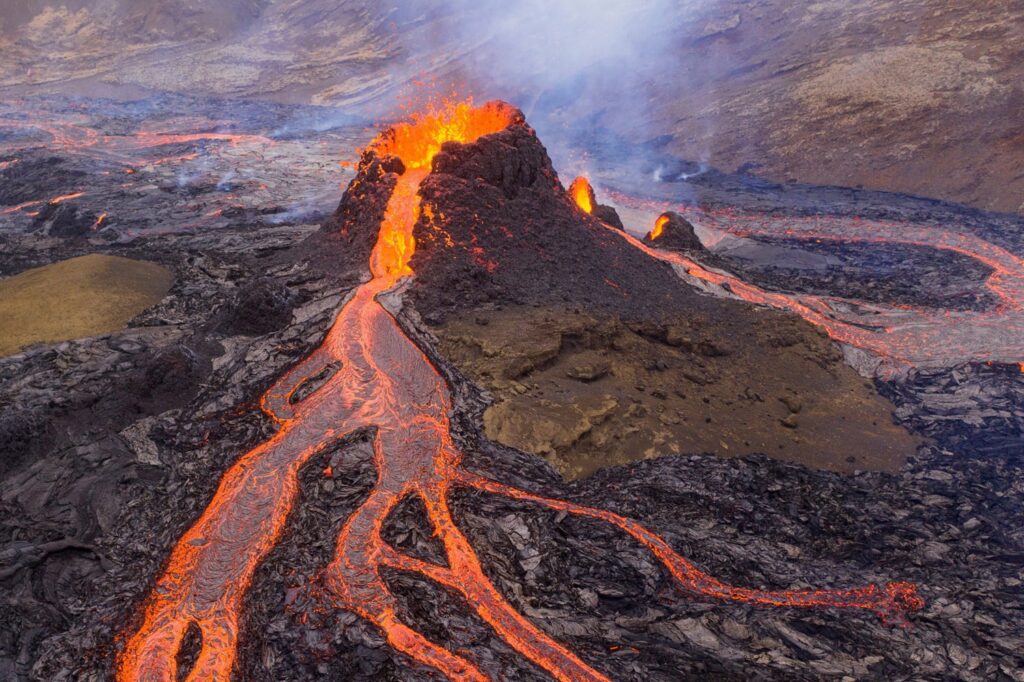
Askja Caldera – The Ultimate Highland Adventure
Located deep in Iceland’s remote central Highlands, Askja is a volcanic caldera with a powerful presence. The area includes Víti Crater, a geothermal explosion crater with milky blue water — and yes, some brave travelers even bathe in it.Accessible only in summer (June–September) via 4×4 vehicles due to rugged terrain and river crossings. A guided super jeep tour is highly recommended.
Tips:
Dress in layers — temperatures can drop quickly.
Bring snacks and water; no shops or facilities nearby.
Combine with visits to nearby Herðubreið or Drekagil Canyon.
Blue Lagoon
Iconic, milky blue, and luxurious, this geothermal spa is located near Keflavík Airport and is perfect for a relaxing soak post-flight. Formed in the lava fields of Grindavík, the Blue Lagoon is not a natural spring but a man-made pool fed by the excess heated water from a nearby geothermal power plant. The warm waters, rich in minerals like silica and sulfur, are known for their healing and skin-rejuvenating properties, making the lagoon a top wellness destination.
Tips:
Book in advance to reserve your preferred time slot — this is one of Iceland’s most visited attractions.
Visit upon arrival or before departure — it's just 20 minutes from Keflavík International Airport.
Bring swimwear or rent on-site; towels, robes, and slippers are also available for rent or as part of premium packages.
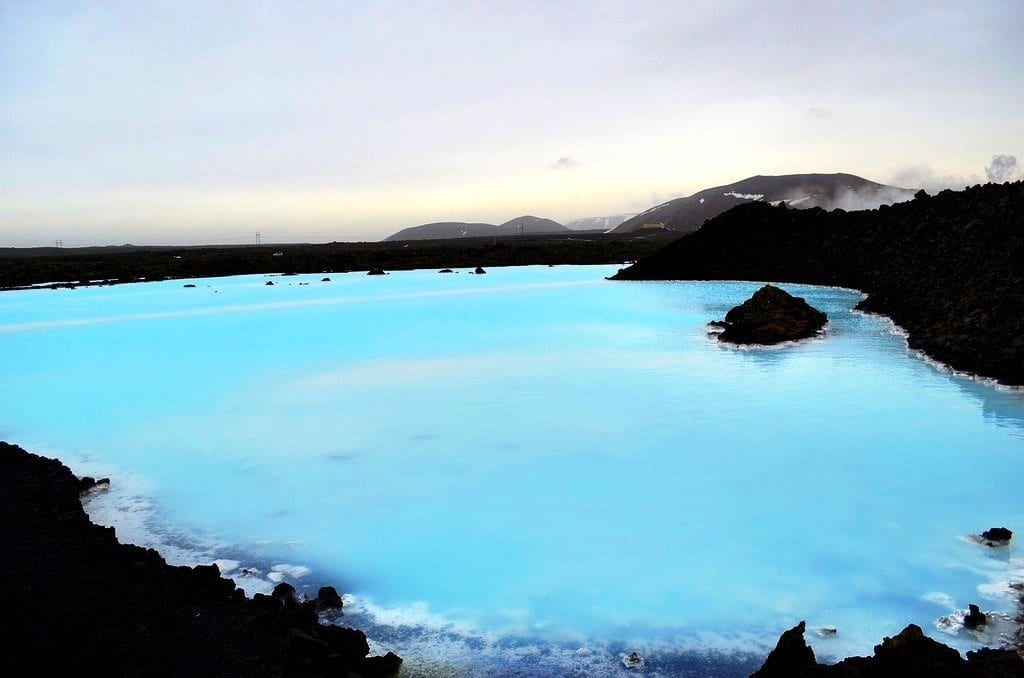
Mývatn Nature Baths
Often called the “Blue Lagoon of the North,” Mývatn Nature Baths offer a quieter, more natural geothermal experience. Located near Lake Mývatn in North Iceland, these mineral-rich waters are surrounded by volcanic craters and lava fields, creating a serene atmosphere with fewer crowds.
Tips:
Open year-round and especially beautiful during sunset or under the Northern Lights.
Bring your own towel and swimsuit, or rent them on-site.
Don’t miss the nearby Hverir geothermal area for a full-day experience.
Geysir Geothermal Area
One of the most famous geothermal zones in Iceland, located in the Haukadalur Valley. While the original Great Geysir rarely erupts nowadays, nearby Strokkur puts on an incredible show, erupting every 5–10 minutes and shooting water up to 30 meters (100 feet) in the air. Surrounded by bubbling mud pots and steaming vents, this area is a must-visit for anyone fascinated by Iceland’s volcanic energy. The site is easily accessible along the Golden Circle route and features walking paths, signage, and visitor facilities.
Hverir
Located near Lake Mývatn in North Iceland, Hverir is one of the most active geothermal fields in the country. This steaming, sulfur-scented area features bubbling mud pots, hissing fumaroles, and vividly colored earth, giving it an otherworldly, almost alien feel.
Embrace the Icy Side (Glaciers & Ice Caves)
Visit a Glacier
- Vatnajökull Glacier – Europe’s largest glacier, covering about 8% of Iceland’s landmass. This colossal ice cap feeds many of Iceland’s most famous outlet glaciers and waterfalls, including Svartifoss and Skaftafell. It offers incredible opportunities for glacier hiking, ice climbing, and exploring natural ice caves in the winter months.
- Snæfellsjökull – A majestic glacier-capped volcano located on the Snæfellsnes Peninsula. It’s famously featured in Jules Verne’s novel Journey to the Center of the Earth. The surrounding national park offers lava tubes, black sand beaches, and dramatic coastal cliffs — making it a perfect day trip for nature lovers and literary fans alike. The Ring Road (Route 1) circles the entire island and connects most of Iceland’s major sights. Rent a 4×4 and:
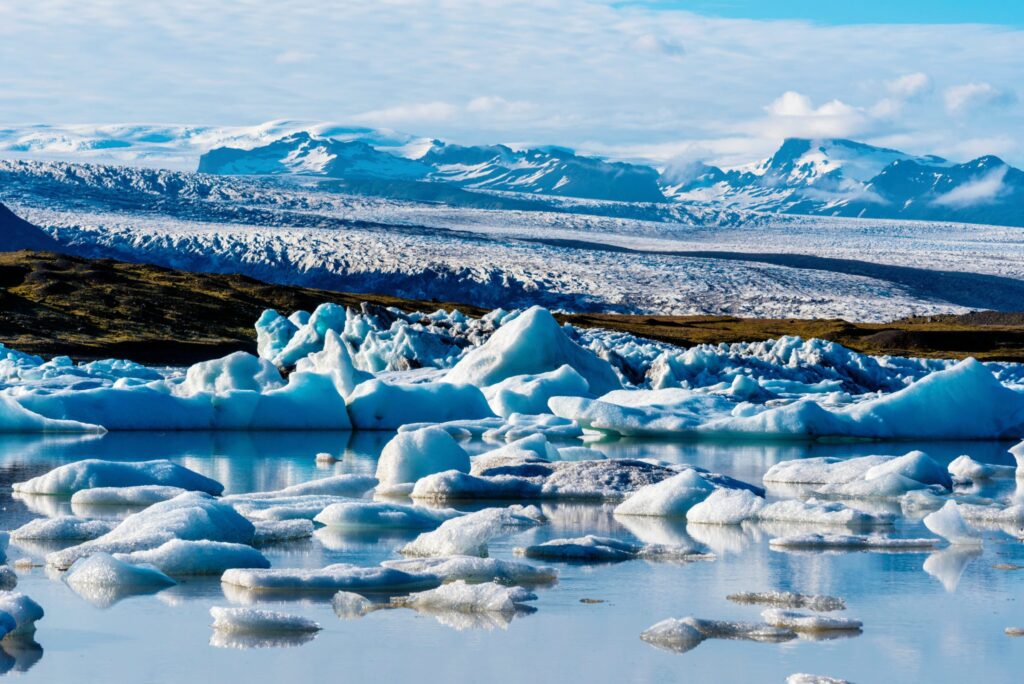
Hike on Glaciers and Ice Climbing
- Available in Skaftafell or Sólheimajökull, glacier hiking and ice climbing are thrilling ways to experience Iceland’s frozen wilderness up close. Tours are led by certified guides and include gear like crampons, helmets, and ice axes. Whether you’re a first-timer or an adventure enthusiast, standing on a moving glacier surrounded by deep blue crevasses is an unforgettable experience.
Explore Ice Caves
- Visit between November and March for access to Iceland’s stunning blue ice caves, especially inside Vatnajökull Glacier. These crystal-clear natural formations are carved by glacial meltwater and vary in shape and color every year, offering some of the most surreal photography opportunities on the planet. Guided tours ensure safety and provide access to the most impressive caves.
See Waterfalls Born from Fire and Ice
Iceland’s waterfalls are shaped by the elemental clash of glaciers and volcanoes, creating some of the most powerful and scenic cascades in the world.
- Skógafoss – One of Iceland’s largest and most iconic waterfalls, known for its roaring power, misty spray, and the chance to see rainbows on sunny days.
- Seljalandsfoss – A unique waterfall you can actually walk behind — an unforgettable photo op!
- Gullfoss – A massive, multi-tiered waterfall on the Golden Circle route that plunges into a rugged canyon with incredible force.
- Dettifoss – Located in North Iceland, this is Europe’s most powerful waterfall, thundering into Jökulsárgljúfur canyon with an awe-inspiring roar.
Catch the Northern Lights (Aurora Borealis)
Best viewed: September to April. During these months, Iceland’s skies light up with one of nature’s most magical shows — the Aurora Borealis.
- Þingvellir National Park – A UNESCO World Heritage site with minimal light pollution.
- Kirkjufell Mountain – One of Iceland’s most photogenic Northern Lights backdrops.
- Any dark, rural area – The farther you are from artificial lights, the better your chances.
Tips:
Check real-time aurora forecasts and cloud cover before heading out.
Dress in layers, gloves, and thermal gear — temperatures can drop well below freezing.
Consider booking a guided aurora tour with photography assistance for the best experience. the stage for the Aurora Borealis. For the best experience:
Head to remote areas like Thingvellir, Jökulsárlón, or the Snæfellsnes Peninsula.
Choose guided tours or rent a car to chase clear skies.
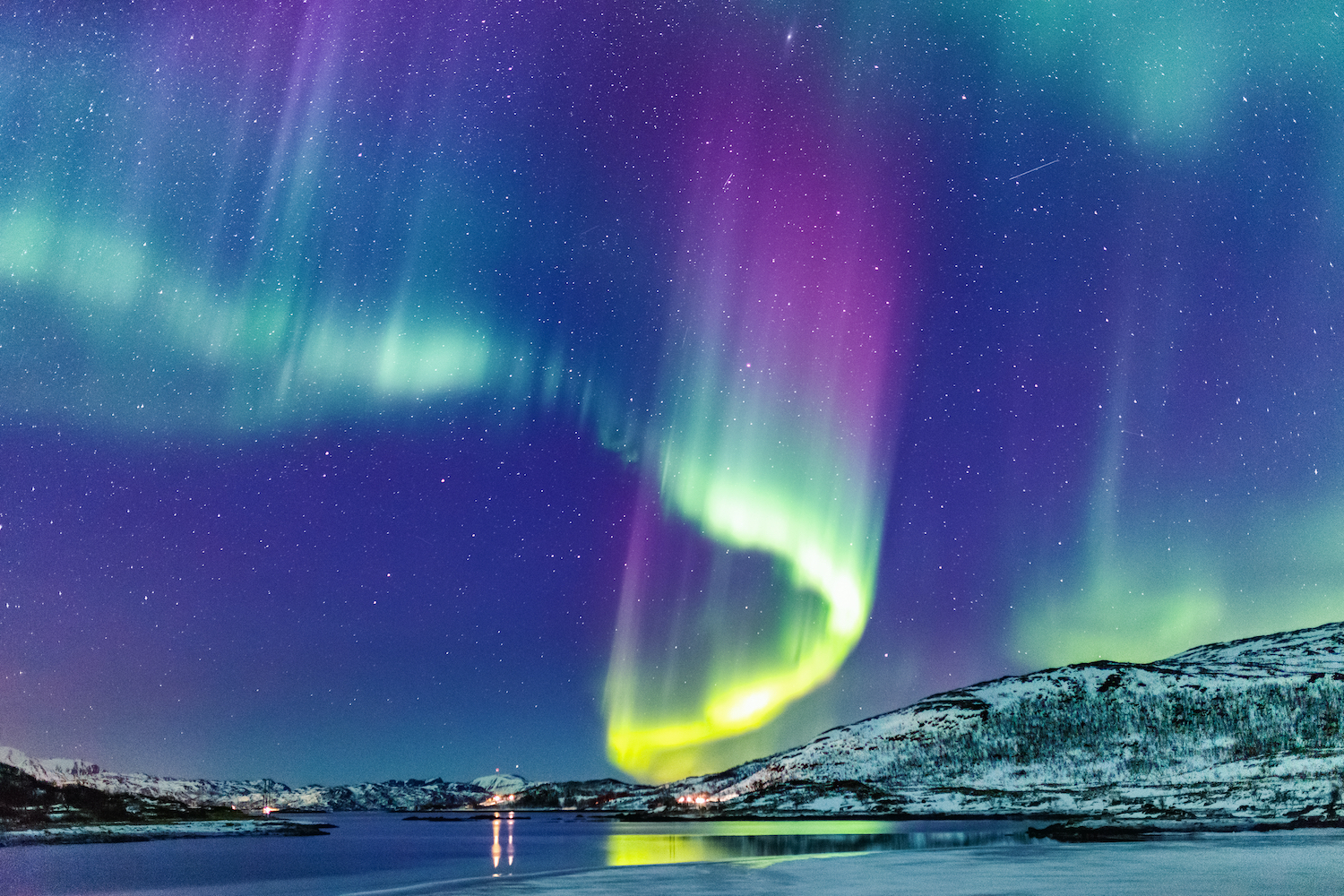
Travel Tips for Indian Travelers
- Visa Requirement: Iceland is part of the Schengen Zone – apply for a Schengen visa.
- Currency: Icelandic Króna (ISK)
- Language: Icelandic (but English is widely spoken)
- Food: Try local dishes like lamb stew, skyr (Icelandic yogurt), and fresh seafood.
- Transport: Renting a car is the best way to explore — especially the Ring Road that circles the island.
Best Time to Visit Iceland
- Summer (June–August): Long daylight hours (Midnight Sun), perfect for road trips and hiking.
- Winter (November–March): Ideal for viewing Northern Lights and experiencing snowy landscapes.
- Shoulder Seasons (May & September): Fewer crowds, balanced weather, and cost-effective.
Plan the Perfect Route
Planning your Iceland trip depends on how much time you have. Here are three popular itinerary options to help you experience both fire and ice:
3–5 Days: Focus on the Golden Circle, South Coast, and a dip in the Blue Lagoon. Base yourself in Reykjavík and take day trips.
6–8 Days: Extend your journey to include Jökulsárlón Glacier Lagoon, Skaftafell, and ice cave tours. This route covers Iceland’s scenic southern stretch.
10–14 Days: Complete the Ring Road for a full circle of Iceland. Visit East Fjords, Akureyri, Mývatn, Dettifoss, and the Snæfellsnes Peninsula. Ideal for nature lovers and photographers.
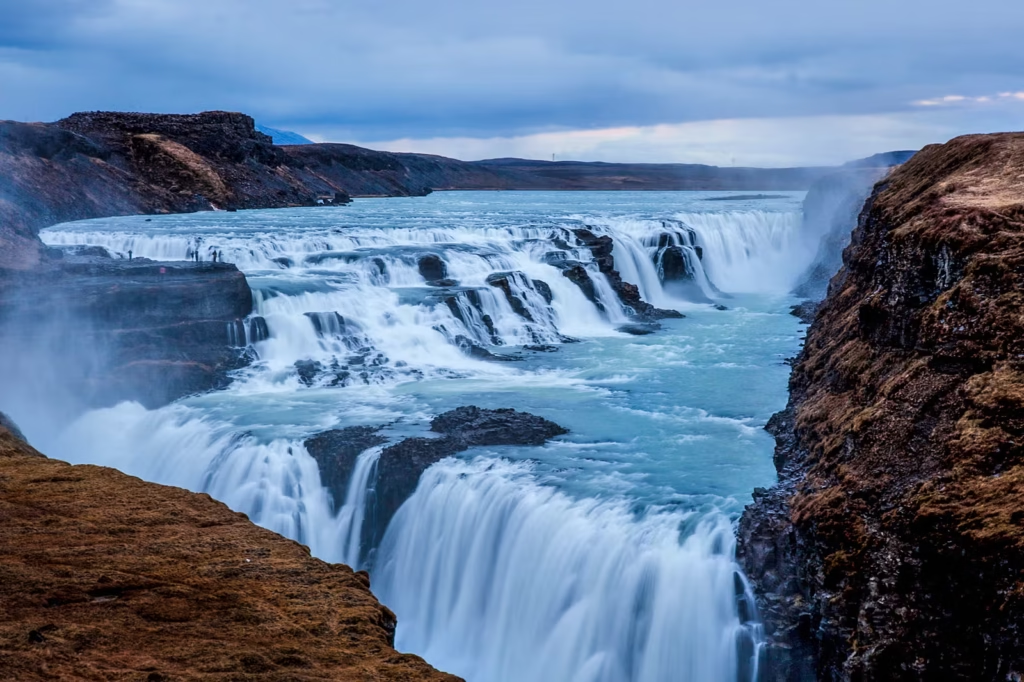
Conclusion: A Land Like No Other
Iceland isn’t just a destination — it’s a raw, living showcase of Earth’s most powerful forces. Where else can you stand between tectonic plates, soak in a lava-heated lagoon, and hike across a glacier in the same trip?
Whether you’re chasing the glow of the Northern Lights, walking behind a waterfall, or standing in awe of an active volcano, Iceland will leave you speechless — and maybe a little changed. It’s wild, untamed, and unforgettable.So pack your thermals, grab your camera, and get ready to explore a best places to visit in Iceland where fire and ice don’t just coexist — they dance together in perfect harmony.


